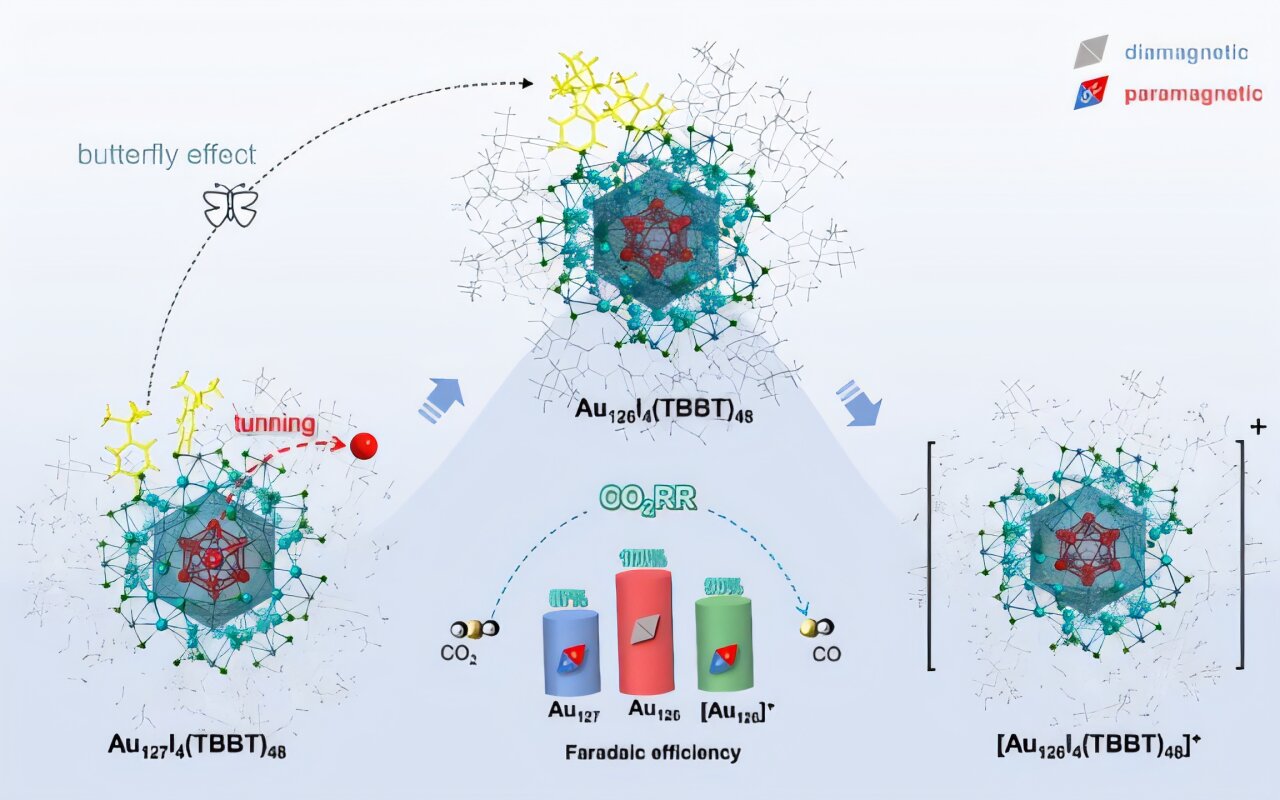
Not long ago, scientists at the Hefei Institutes of Physical Science under the Chinese Academy of Sciences carried out sequential procedures to remove both the innermost atom and the outermost electron from a gold nanoparticle without altering its structural integrity. Their meticulous handling enabled an investigation into how changes in the magnetic spin affect the particle’s capacity for catalysis.
Led by Professor Wu Zhikun alongside Professor Yang from the Institute of Process Engineering at the Chinese Academy of Sciences and Professor Tang from Chongqing University, this research project was published in Science Advances .
Gold nanoclusters—which consist of a small number to several hundred gold atoms—are perfect subjects for investigating how their atomic arrangement influences their characteristics. However, precisely adjusting the configuration of these clusters at an individual atom level, particularly as they grow bigger and more intricate, has traditionally posed a significant difficulty.
To address this issue, the team created an innovative synthesis technique employing a blend of thiol and iodine ligands to stabilize a multishell gold cluster: [Au] 127 I 4 (TBBT) 48 where TBBT is a large sulfur-bearing compound. By incorporating extra thiols, they managed to carefully extract the solitary gold atom situated right at the core of the structure—similar to taking out a pea from the heart of a matryoshka doll—without causing the collapse of the enclosing layers. Consequently, this formed a novel, stable cluster: Au1. 26 I 4 (TBBT) 48 , which is diamagnetic.
Additionally, by meticulously oxidizing this structure, the scientists developed a third variation: [Au1 26 I 4 (TBBT) 48 ] + , which restored paramagnetism. Essentially, the team showed they could finely adjust the material’s magnetic state by sequentially eliminating one atom and one electron—an exceptional degree of control seldom seen in nanomaterials.
With these clusters, the scientists managed to examine alterations in magnetic spin distribution throughout the structure. Their findings revealed that when the core atom was eliminated and oxidation occurred, the spin density moved towards the periphery. Furthermore, they discovered that spins accumulated predominantly around the iodine atoms rather than the sulfur atoms, suggesting that manipulating the spin might be crucial for adjusting the catalyst’s characteristics.
To test this concept, the group assessed the effectiveness of each variant of the gold nanoclusters in facilitating the conversion of carbon dioxide into carbon monoxide—an increasingly significant reaction within the realm of clean energy studies. The diamagnetic version (Au 126 I 4 ) attained almost 100% Faradaic efficiency at a fairly low voltage, surpassing its paramagnetic equivalents. This outcome robustly suggests that magnetic spin significantly influences catalytic processes.
Our research offers crucial understanding of the role spin plays in catalysis," stated Professor Wu. "It might pave the way for developing novel approaches to create multi-functional materials at an atomic scale.
More information: Guoqing Bian et al., remove the core atom from a magnetic multi-shell gold nanoparticle to achieve nearly perfect transformation of CO2 into CO. Science Advances (2025). DOI: 10.1126/sciadv.adu1996 . www.science.org/doi/10.1126/sciadv.adu1996
Provided by the China Academy of Science
The tale was initially released on Massima . Subscribe to our newsletter For the most recent updates on science and technology news.